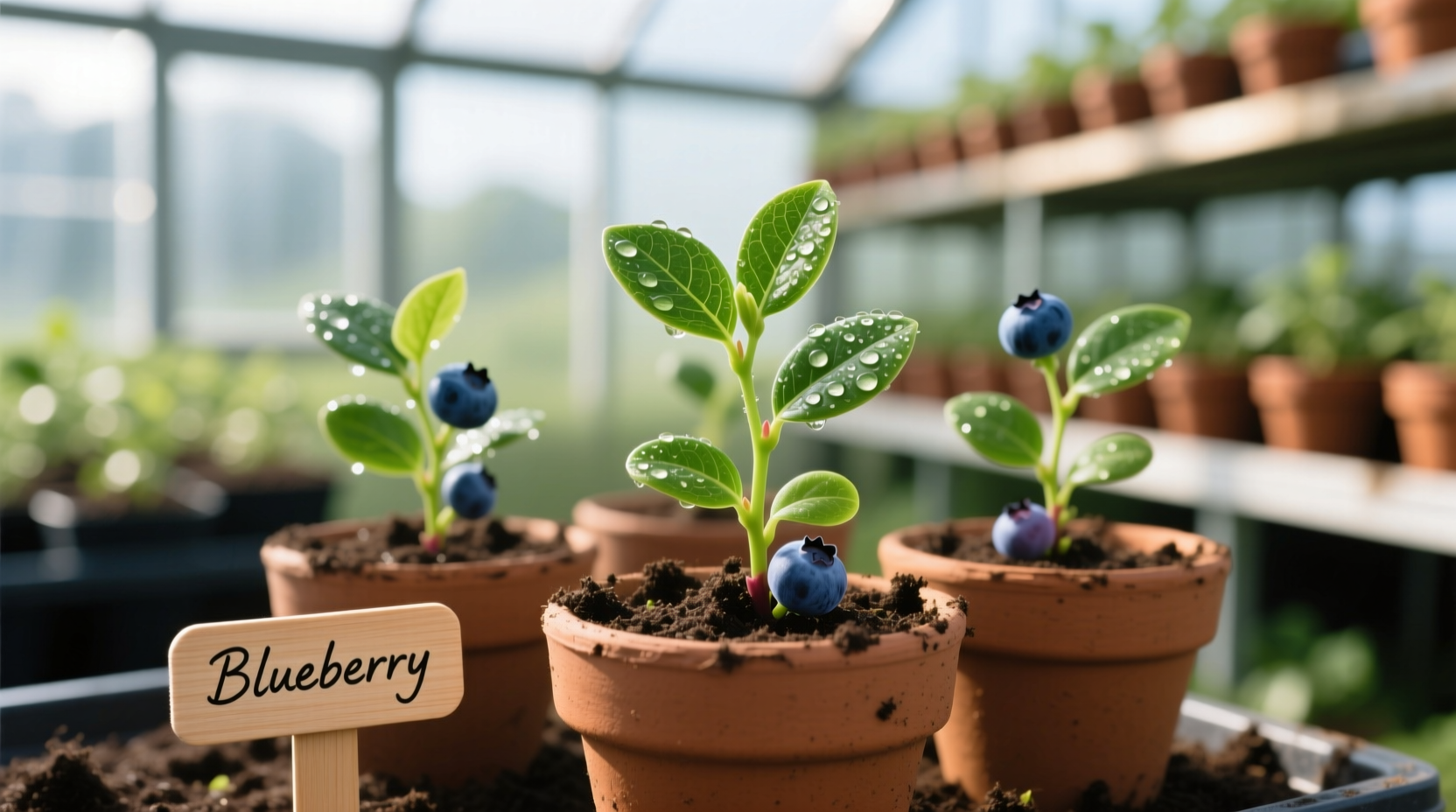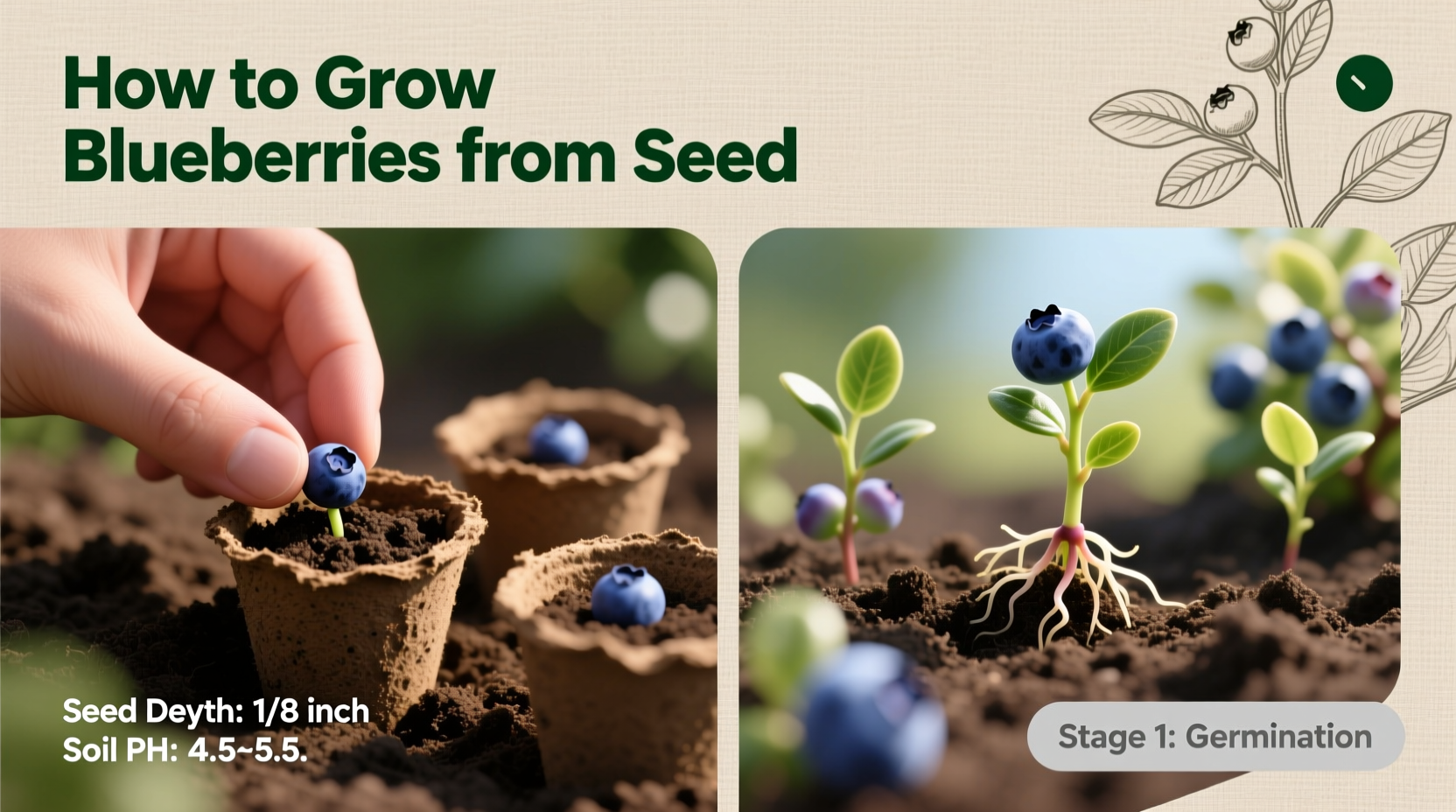Many gardeners assume blueberries must be purchased as established plants, but growing them from seed is a cost-effective and satisfying alternative. While it requires more time than buying nursery plants, you gain complete control over the growing process from the very beginning. Understanding the specific needs of blueberry seeds—particularly their requirement for cold stratification and acidic soil conditions—is crucial for success.
Why Grow Blueberries from Seed? Setting Realistic Expectations
Before diving into the process, it's important to understand what growing blueberries from seed realistically entails. Unlike many fruits, blueberries grown from seed take 2-3 years to produce their first harvest. According to research from the University of Maine Cooperative Extension, seeds from highbush blueberries (Vaccinium corymbosum) typically germinate within 3-8 weeks after proper stratification, but fruit production doesn't begin until the plants mature.
The main advantage of growing from seed is cost savings—you can produce multiple plants for the price of one nursery plant. However, be aware that blueberries exhibit significant genetic variation, meaning your plants may produce berries different from the parent fruit. For consistent results, many commercial growers use cuttings rather than seeds, but home gardeners can achieve satisfying results with proper technique.
Seed Selection and Preparation: The Critical First Step
The quality of your seeds determines your success rate. For best results, use fresh seeds from ripe, organic blueberries. Commercially frozen or dried berries often have lower germination rates. The University of California Agriculture and Natural Resources recommends using seeds from varieties known for good germination, such as 'Bluecrop' or 'Patriot'.
| Blueberry Variety | Germination Rate | Time to Fruit | Best Climate Zone |
|---|---|---|---|
| Highbush (V. corymbosum) | 60-75% | 2-3 years | 4-7 |
| Rabbiteye (V. virgatum) | 40-60% | 3-4 years | 7-9 |
| Lowbush (V. angustifolium) | 50-70% | 3-4 years | 3-6 |
This fact对照 table shows key differences between common blueberry types when grown from seed. Highbush varieties generally offer the best balance of germination success and reasonable time to fruit production for most home gardeners.
Extracting and Cleaning Blueberry Seeds
Proper seed extraction significantly improves germination rates. Here's the professional method:
- Place ripe blueberries in a fine mesh strainer
- Gently crush berries against the mesh with a spoon
- Rinse thoroughly under cold water, separating pulp from seeds
- Transfer seeds to a paper towel to dry for 24 hours
- Store in a labeled envelope until ready for stratification
According to USDA horticultural guidelines, properly cleaned seeds have up to 30% higher germination rates than seeds with residual pulp, which can promote mold during storage.
Cold Stratification: Mimicking Nature's Process
Blueberry seeds require a cold, moist period to break dormancy—a process called stratification. This simulates winter conditions the seeds would experience in nature. The optimal stratification period is 90 days at 34-40°F (1-4°C).
Here's the most effective method:
- Mix seeds with equal parts moist peat moss or vermiculite
- Place in sealed plastic bag with small ventilation holes
- Store in refrigerator (not freezer) for 90 days
- Check weekly for mold and maintain consistent moisture
Avoid common mistakes like using dry storage (reduces germination) or insufficient cold period (leads to uneven sprouting). The University of Georgia Extension notes that extending stratification beyond 120 days can actually reduce viability.
Planting Blueberry Seeds: Creating the Perfect Environment
Blueberries demand specific soil conditions that differ from most garden plants. The critical factor is soil acidity—blueberries require a pH between 4.5 and 5.5. Standard potting mix won't work without modification.
Prepare your planting medium:
- Mix equal parts peat moss, pine bark fines, and perlite
- Add elemental sulfur to lower pH if needed
- Test pH with a reliable meter before planting
Plant seeds 1/8 inch deep in individual containers with drainage holes. Maintain consistent moisture—not soggy, but never allowed to dry out. Place in a warm location (70-75°F/21-24°C) with indirect light after stratification.

Germination and Early Care: Patience Pays Off
Germination typically occurs 3-8 weeks after planting stratified seeds. During this critical phase:
- Maintain consistent moisture with a spray bottle
- Provide 14-16 hours of light daily (grow lights work best)
- Keep temperatures between 65-75°F (18-24°C)
- Avoid fertilizing for first 6-8 weeks
Watch for common issues: damping-off disease (treat with cinnamon powder), algae growth (reduce moisture), and leggy growth (increase light). The first true leaves should appear 2-3 weeks after sprouting.
Transplanting and Long-Term Care
Transplant seedlings when they reach 3-4 inches tall and have several sets of true leaves. This process requires careful handling:
- Choose containers at least 6 inches in diameter with drainage
- Use the same acidic potting mix as for germination
- Gently loosen roots without damaging the delicate system
- Water thoroughly after transplanting
For outdoor planting, wait until seedlings are one year old and all danger of frost has passed. Select a location with full sun (6+ hours daily) and protection from strong winds. Space plants 4-6 feet apart in rows 8-10 feet apart.
Maintenance Schedule for Healthy Growth
Consistent care produces the best results. Follow this timeline for optimal growth:
- Spring: Apply acidic fertilizer (ammonium sulfate) as new growth appears
- Summer: Maintain 2-3 inches of organic mulch (pine needles work perfectly)
- Fall: Reduce watering as temperatures drop
- Winter: Protect young plants with burlap in zones below 5
Water requirements are specific—blueberries need 1-2 inches of water weekly, but their shallow roots make them susceptible to both drought and waterlogging. The University of Florida IFAS Extension recommends using drip irrigation for consistent moisture delivery.
Troubleshooting Common Problems
Even with proper care, challenges may arise. Here's how to address frequent issues:
- Yellowing leaves: Indicates high soil pH—apply sulfur or ammonium sulfate
- Poor growth: Check for nutrient deficiencies—use acidic liquid fertilizer
- Fruit drop: Often caused by inconsistent watering during fruit development
- Pests: Aphids and blueberry maggots can be controlled with insecticidal soap
Remember that seed-grown blueberries naturally take longer to establish than nursery plants. Don't expect significant harvests until year three. Patience is essential when growing blueberries from seed.
When to Expect Your First Harvest
Understanding the growth timeline prevents disappointment. Here's what to expect:
- Year 1: Focus on root and leaf development—remove any flowers to strengthen plant
- Year 2: Small harvest possible—limit to 5-10 berries per plant to encourage growth
- Year 3: First meaningful harvest—typically 1-2 cups per mature plant
- Year 4+: Production increases annually as plants mature
Unlike nursery plants that may produce immediately, seed-grown blueberries follow this natural progression. The wait pays off with plants uniquely adapted to your specific growing conditions.











 浙公网安备
33010002000092号
浙公网安备
33010002000092号 浙B2-20120091-4
浙B2-20120091-4